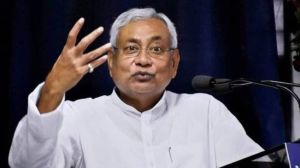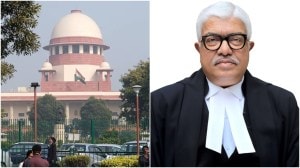Yarn Dyed Again
Apart from a few post-Dhirubhai chapters,a repeat of The Polyester Prince
What do you do when a blockbuster book youve written gets banned for the principal audience it is aimed at? Simple: you try again. Thats what former New Delhi bureau chief of the Far Eastern Economic Review,Hamish McDonald,has done with Ambani & Sons. In 1998,McDonald came up with The Polyester Prince,a book that dealt extensively with the rise of Dhirubhai Ambani,how he won friends and influenced people in a way Dale Carnegie probably would have never imagined,his brush with authority and his ability to sway them his way or simply move them out of the way.
The Polyester Prince was originally planned as a friendly biography of Dhirubhai,and his close associate,now Union petroleum minister,Murli Deora,was even chosen to brief McDonald on the early years. For some reason,the book turned hostile midway,so much so that Reliance lawyers sent McDonald a stiff letter. With the fight between Mukesh and Anil Ambani now household gossip,the veteran journalist has dusted the old book,repeated chapter for chapter,added a few new ones and,voila,heres a brand new book! Its called being ecological reuse the news.
For those who have read photocopies of The Polyester Prince,its a bit odd,since it is not mentioned anywhere in Ambani & Sons that about three-fourths of the book are the same as the earlier one,right from chapter names to the way they begin and end,with just some minor tweaking in between. So,the chapter A persuasive young bania in The Polyester Prince begins,Among all the 550-odd princely rulers left,with British Residents at their shoulders few were more eccentric than … the Nawab of Junagadh. A persuasive young bania in the new book begins,Among all the 550-odd princely rulers left to run their domains in the last years of the British Raj . As they say in Indian English,same difference. Chapter 9 of the original,Under Siege,you realise to your horror,is not there in the new book. But dont worry,you find the gist tucked away in the chapter The Paper Tiger.
Even so,these old-new chapters make for good reading,refreshing your memories of the famous import of polyester filament yarn (PFY) against the export of nylon yarn which gave Ambani a huge profit (the exports fetched nothing but the PFY imports were worth a fortune); how when VP Singh restricted the import of purified terephthalic acid (PTA,a petrochemical needed for making polyester),Dhirubhai managed to open enough letters of credit to import PTA to last him 18 months; of how every part of Nusli Wadias DMT plant was inspected at the customs for four weeks; of how Sukumar Mukhopadhyay was summoned to the finance ministry the day he was about to pass an order against Reliance; the list goes on.
The new sections will be interesting to the lay reader who hasnt followed every detail over the last few years: of how Anil was ousted from Reliance; of how Reliance Infocomm was caught trying to avoid Access Deficit Charge payments on its international calls and the blame was sought to be put on Akhil Gupta who had the sense to retain e-mail on the subject; and of Mukeshs sweat equity saga in Infocomm. The Mukesh-Anil chronicle,frankly,deserved more chronicling,more detail. Still,worth a read.





- 01
- 02
- 03
- 04
- 05


























